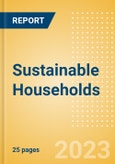Global consumers are strongly influenced by sustainable features in household cleaning products, which is fueling innovations in the sector pertaining to bioenzymes, non-toxic ingredients, multi-functional ingredients, fabric restoration, circular B2B opportunities, and white space opportunities.
Scope
- Brands should explore the use of enzymes in formulations to provide enhanced and more efficient cleaning capabilities, additional functionalities, and fabric life-extension qualities in laundry solutions, to improve overall sustainability.
- Household cleaning brands can benefit from researching how to incorporate non-toxic, environmentally-friendly ingredients into formulations.
- Ingredients enabling multi-functionality can benefit both brands and consumers from a sustainability standpoint. A product’s ability to restore and brighten fabrics, targets stains, and eliminate odors, reduces the need to purchase separate specialized solutions, reducing plastic waste.
Reasons to Buy
- Understand the challenges, opportunities, and successful strategies for specific companies in order to tap into what is really impacting the industry..
- Gain a broader appreciation of the fast-moving consumer goods industry by gaining insights from both within and outside of your sector.
- Access valuable strategic take-outs to help direct future decision-making and inform new product development.
Table of Contents
1. Introduction2. 10 sustainable innovations in the household industry
3. Take-outs
- Contact the Publisher
Companies Mentioned (Partial List)
A selection of companies mentioned in this report includes, but is not limited to:
- Ecover
- EcoEgg
- Smol
- Safely
- Unilever
- Dirt is Good
- Robijn
- Aromatel Rinde+
- P&G
- Lenor
- Kurin
- Dirty Labs
- Cleancut
- Essity
- Biorestore








